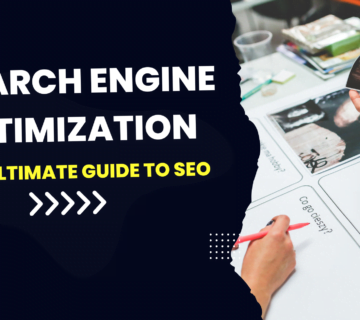Performing a comprehensive SEO audit is crucial for businesses aiming to maximize their online visibility and stay ahead in the digital landscape. Aperoltech, a leader in the tech industry, understands the significance of maintaining an optimized online presence. In this guide, we will explore the 18 essential steps to conduct a thorough SEO audit.
What Is an SEO Audit?
An SEO audit is a systematic examination of your website’s health, encompassing various factors that influence its search engine performance. It involves assessing technical aspects, content quality, user experience, and backlink profile to identify areas that may impact your site’s visibility on search engine results pages (SERPs).
Why Are SEO Audits Important?
SEO audits are vital for maintaining and improving your website’s search engine rankings. By identifying and addressing issues, you can enhance user experience, boost organic traffic, and stay ahead of the competition. Regular audits help ensure that your site aligns with search engine algorithms, providing a better chance of ranking higher in search results.
Performing an SEO Audit: The Tools You Need
Before delving into the steps, it’s essential to equip yourself with the right tools to conduct a comprehensive SEO audit. Here are some indispensable tools for the job:
- Ahrefs: An all-in-one SEO tool that provides insights into backlinks, keywords, and competitor analysis.
- Semrush Site Audit Tool: Helps identify technical issues affecting your site’s performance.
- Google Analytics: Offers in-depth analysis of website traffic and user behavior.
- Google Search Console: Provides data on your site’s search performance and alerts you to potential issues.
- Google PageSpeed Insights: Evaluate your site’s speed on both desktop and mobile devices.
- Google Schema Markup Testing Tool: Ensures your website’s structured data is correctly implemented.
How to Do an SEO Audit?
- Benchmark Your Rankings and Understand Your Competitors
Begin by analyzing your current search engine rankings and understanding your competitors. Identify keywords relevant to your industry and track how well your website performs against them. - Check for Duplicate Versions of Your Site in Google’s Index
Ensure there are no duplicate versions of your site in Google’s index. Search engine rankings can be negatively affected by duplicate content, which can also lead to confusion for search engines. - Check Your Site’s Indexed URLs
Review the URLs indexed by search engines to verify that all relevant pages are included and none of the unnecessary ones are indexed. - Check for Manual Actions
Inspect Google Search Console for any manual actions taken against your site. Addressing these issues is crucial for maintaining search engine visibility. - Analyze Your Site’s Speed
Page speed is a critical factor for user experience and search rankings. Identify areas for improvement by utilizing tools such as Google PageSpeed Insights. - Confirm That Your Site Uses HTTPS
Security is a ranking factor for search engines. Ensure your site uses HTTPS to provide a secure connection for users. - Check for Mobile-Friendliness Issues
It’s crucial to guarantee your website is optimized for mobile devices given the rising usage of these devices. Google’s mobile-friendly test tool can help identify and fix issues. - Analyze and Resolve Further Indexation Issues
Address any additional indexation issues, such as incorrect directives in the robots.txt file or issues with canonicalization. - Understand Your Site’s Page Experience
With the introduction of Core Web Vitals, understanding and optimizing for page experience is crucial. It’s important to consider elements such as the speed of loading, the level of interactivity, and the consistency of visuals.. - Audit Your On-Page SEO
Review and optimize on-page elements such as title tags, meta descriptions, header tags, and keyword usage. Make sure that the content of every page is both unique and pertinent to the page. - Fix Broken Internal Links
Internal links play a vital role in distributing link equity across your site. Identify and fix broken internal links to improve user navigation and enhance SEO. - Clean Up Your Sitemap
Make sure that your website’s structure is accurately represented in the XML sitemap and that it is updated regularly to reflect any changes made to the site. This helps search engines crawl and index your pages more efficiently. - Check Your Redirects
Examine redirects to ensure they are implemented correctly. Avoid excessive redirects, as they can impact site speed and user experience. - Find and Fix Duplicate Content Issues
Identify and address any duplicate content issues, as they can lead to confusion for search engines in understanding which page to rank. - Identify Thin Content Pages
Thin content, or pages with little valuable information, can impact your site’s overall quality. Identify and either improve or remove thin content pages. - Fix Issues with Orphan Pages
Orphan pages are those that are not linked to other pages on your site. Ensure that all pages are accessible and linked appropriately. - Compare Your Content to Top Ranking Pages and Analyze Searcher Intent
It is advisable to analyze the material present on the highest-ranking pages for your desired keywords. Understand searcher intent and ensure your content provides comprehensive and valuable information. - Run a Backlink Audit
Backlinks are a crucial aspect of SEO. Use tools like Ahrefs to conduct a thorough backlink audit, identifying and disavowing toxic backlinks while nurturing quality ones.
Final Thoughts
Conducting a regular SEO audit is a proactive approach to maintaining and improving your website’s search engine performance. Aperoltech’s Digital Marketing Services is evident in its comprehensive approach to SEO audits. By following these 18 steps, you can address technical issues, enhance on-page elements, and ensure a positive user experience. Remember, SEO is an ongoing process, and staying vigilant with audits will help you adapt to the ever-changing digital landscape and stay ahead in the competitive online market. Regular SEO audits are not just a task; they are a strategic investment in the long-term success of your online presence.
FAQs
How often should I conduct an SEO audit for my website?
Aperoltech recommends conducting an SEO audit at least twice a year to stay proactive in addressing potential issues.
What tools does Aperoltech use for SEO analysis?
Aperoltech utilizes a combination of industry-leading tools, including Google Analytics, SEMrush, and Ahrefs, for in-depth SEO analysis.
How long does it take to see results after implementing SEO changes?
The timeline for seeing results varies, but Aperoltech typically observes positive changes within a few weeks to a few months after implementation.
Is local SEO essential for businesses operating online?
Yes, local SEO is crucial for online businesses as it enhances visibility in local searches and builds trust among the target audience.
How does Aperoltech stay informed about algorithm updates?
Aperoltech stays updated on algorithm changes through industry publications, forums, and direct communication with search engine representatives.




No comment